NAPA VALLEY, Calif. — No proof really was necessary, so the four-day exercise that a dedicated lover of Napa Valley cabernet decided to conduct here had nothing to do with science. You might assume, correctly, that the events were done more for enjoyment and as an excuse to get together with some old friends to share some old wines.
Oh, not just any old wines, as will be made clear below. Four special tasting events were conducted recently at four venues in the Napa Valley, primarily because a serious wine collector from Hawaii by the name of Chris Clever believed firmly in a concept that seems obvious when it is explained, but not so obvious to some people. It is the simple fact that Napa Valley’s historic cabernets, wines of structure and balance, when they are perfectly stored can outlive almost all other cabernets being made anywhere, including most of those from 6,000 miles to the east.
There are, of course, a couple of additional details that need to be laid out to make this outrageous statement a reality. One of those mandates is that the California wines have to be carefully chosen. And although we did taste a couple of red Bordeaux during the four events, and although they tasted beautifully, the most remarkable aspect of these events was that the California wines almost universally were phenomenal.
An additional conclusion may be drawn, but we’ll leave that until later, too.
Also, the California cabs that were chosen mostly had perfect storage conditions throughout their lives. In almost every case, wines from the 1960s through the late 1980s displayed such youthful characteristics that they probably would have been even better a decade from now or more.
Napa Valley’s historic cabernets, when perfectly stored, can outlive almost all others, proving their remarkable aging potential.
For many decades, lovers of red Bordeaux have argued that those French wines live extremely long lives. And to be sure, the best of them do. Especially classified-growth Bordeaux from good vintages. That truism is unquestioned. And because of the kind of grape variety that cabernet is with its aggressive tannins, even mediocre Bordeaux from mediocre vintages can improve over a decade or two. It certainly need not be said that Bordeaux is special, notably with maturity.
But because the Bordeaux grape varieties (cabernet, merlot, cabernet Franc, etc.) grow in France’s moderate continental climate without anywhere near as much sunlight as in California, it has always been assumed that there was a drawback in the California wines. It was assumed that our ripeness levels, which are so evident early in California cabernets, actually harmed our wines’ aging potential. Historically, there has always been a pervasive belief that red Bordeaux would live longer than the warmer-climate California cabs. To think otherwise was, uh, unthinkable.
Typical French beliefs included that California cabernets simply would not age as long as did Bordeaux. Remember this. It arises later.
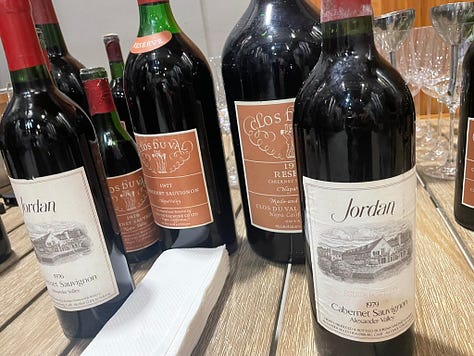
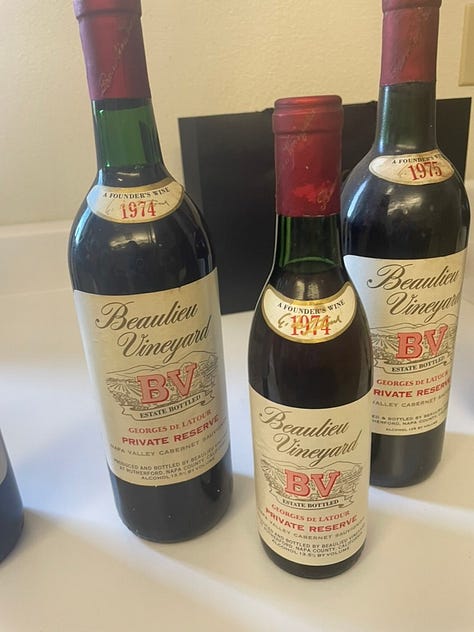
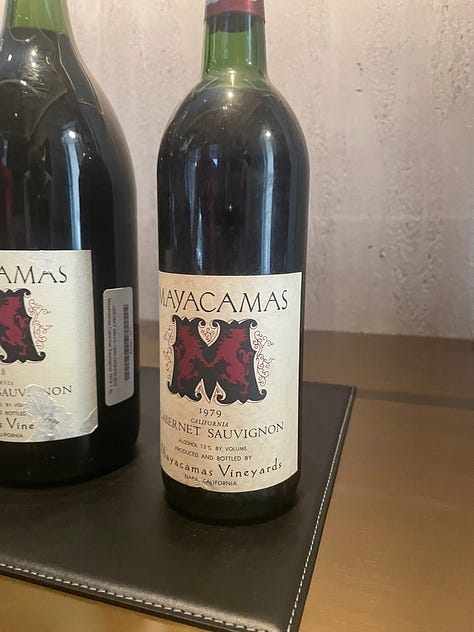
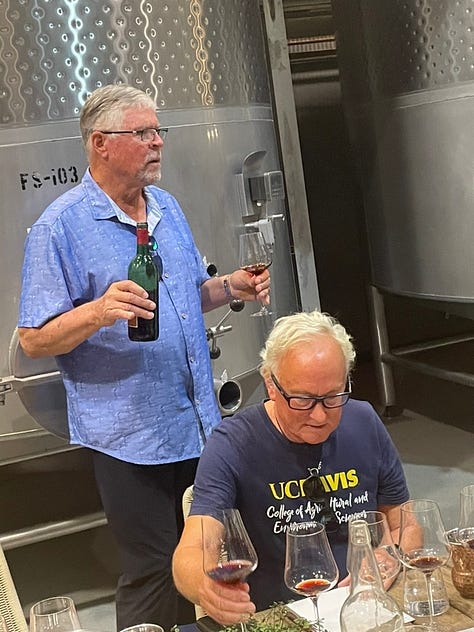
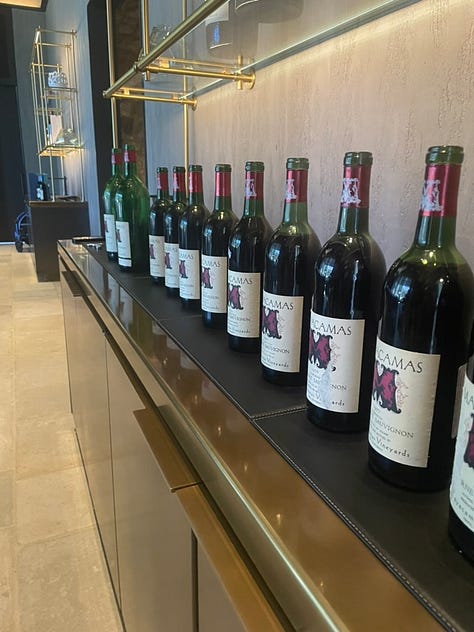
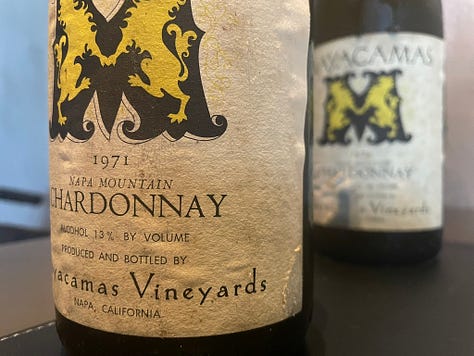
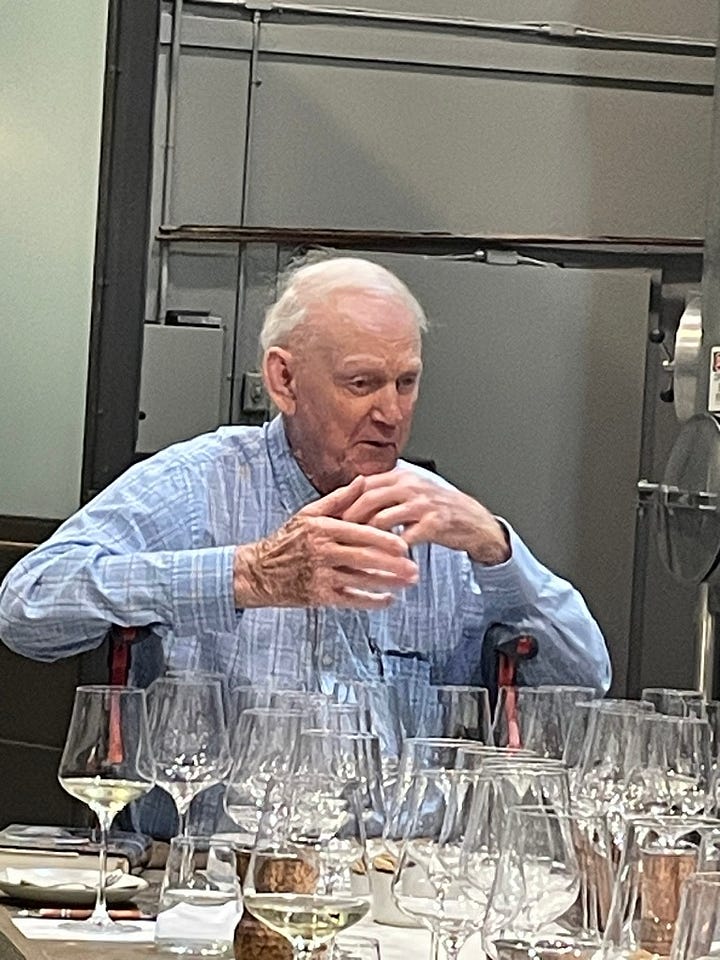
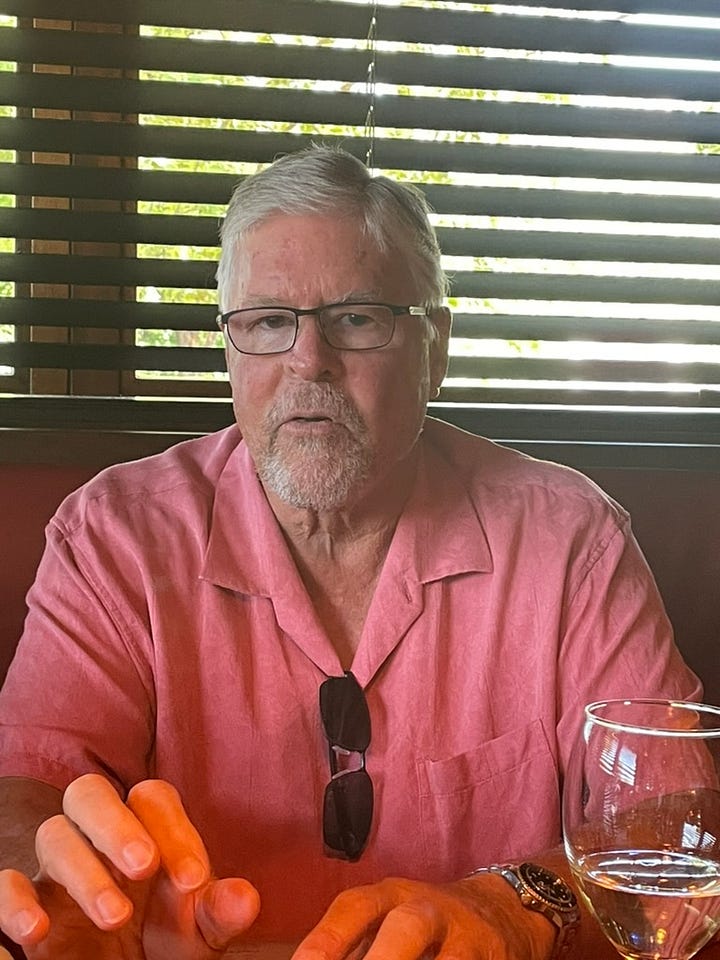
Chris Clever is a contractor who lives in Hawaii. He has long had an abiding passion for mature California cabernets, especially those from the past that displayed regional characteristics because they were made with modest alcohols. Not long ago, he also was a huge believer in some of the state’s most expensive cabernets – wines called iconic by some people. He acquired many wines that received extremely high scores and spent significant sums both directly from the producing wineries as well as from auction houses.
A decade ago, Chris called to ask if I could attend a tasting of 17 of his 100-point wines that were considered to be the best recent cabs made in Napa Valley. The event, staged at Davis Estate in Calistoga, was interesting, mainly because I was not enamored of most of the wines and wondered how they would show. A dozen people attended this event, which proved to be disappointing to most attendees. So Chris began looking more seriously at the 100-point concept.
He also began looking more closely at some of the older bottlings in his wine cellar. He noticed that most had lower alcohol levels. The 100-point cabernets all were much higher alcohol than the great Napa cabs of the past. He sensed a trend. That led to him to stage other cabernet tastings with a good friend, Rob Davis, then the winemaker at Jordan Vineyards in Sonoma County. As a disciple of André Tchelistcheff, Rob had always made balanced wines with moderate alcohol levels.
Chris’ next event, staged at Jordan, was far more interesting because he had also brought some older red Bordeaux, including an old bottle of Château Latour, one of the greatest red Bordeaux. That event included a Jordan cabernet from the winery’s first vintage, 1976. Despite its relatively light color, it was impeccable, still in great shape.
That event was so successful that Chris decided to stage another tasting featuring only older California cabernets. Conducted at Stark’s, a downtown Santa Rosa steakhouse, it included 20 more remarkable California wines, including several from Clos du Val. Attending was the winery’s now-retired winemaker, Bernard Portet, who had learned about making wine from his father, André, who was technical director at the famed Château Lafite-Rothschild.
Months later, another Clever event in Napa included primarily the wines of Beaulieu Vineyard, including the famed trio of BV’s Georges de Latour Private Reserve Cabernets from 1968, 1969 and 1970 — along with another 30 wines. It was conducted at Beaulieu, and one of the 30 participants in that event was Richard Peterson, who had made several of the BV wines when he was Tchelistcheff’s successor as winemaker in the early 1970s. Peterson turned 93 years old in June.
Also attending the BV event was Brad Dixon, the chief sommelier from the famed Bern’s Steakhouse in Tampa, Florida, which is widely considered to have the greatest restaurant wine list in the world. The Clever tastings are considered to be so monumental that Dixon flew out just for that event and contributed several bottles to it.
With this as a backdrop, it’s easy to understand how complicated it is to stage one of these extravaganzas. Chris must arrange for air-freighting all the wines from Hawaii to California months in advance and have them stored in a secure and cool location to keep them in good condition. He also has to book airline tickets for himself and two associates as well as arrange for lodging and meals, ground transportation and tasting venues. It’s a logistical labyrinth.
Napa is the most ideal location in which to stage most of these events. Seating at the various venues limits the size of the invite list. The event that started off last week’s tastings was hosted by Beaulieu Vineyard in its private André Tchelistcheff Tasting Room and included nearly three dozen BV wines, including three old pinot noirs (1960, 1964 and 1968). There were 18 BV Private Reserve Cabernets (!) including a magnum of the 1978 vintage. Every wine had developed beautiful complex aromatics. This is a superb validation of the style of wine that the great winemaker Tchelistcheff developed between 1938 and his (early) retirement in 1969.
Attendees at last week’s BV tasting included me, Portet, Cathy Corison (the brilliant cabernet producer who owns Corison Wines), Davis, John Caldwell (Caldwell Wines), Peterson and his daughter, the famed Napa chef and chocolatier Holly Peterson (Flourish Chocolates), Hawaiian wine retailer Alvin Wakayama and Hawaiian wine collector Ken Hausman.
The following afternoon the same group was hosted at Clos du Val in Stag’s Leap. Chris’ wines included a 1978 Clos du Val Merlot, five CdV zinfandels from the 1970s, 11 cabernets made by Portet, including the 1974 from a magnum, a 1975 from a magnum and a 1979 from a 3-liter bottle.
One of the great treats of the event was hearing Portet explain previously unrevealed details of each vintage of cabernet along with additional tales of the headaches faced from year to year. Attendees included most of the earlier group along with Michael Mondavi and Greg Gregory, a managing director at Silicon Valley Bank, a specialist in SVB’s relationship with the wine business. Dixon from Bern’s in Tampa planned to fly out to join the event, but hurricane-related issues canceled his participation. Bern’s contributed special older bottles to the event nonetheless.
Because the Clos du Val tasting was exclusively wines from Stags Leap District, all of them displayed a slight similarity in style – a delicacy that marked the district’s cabernets for its first 20 years – until alcohol levels began to rise precipitously.
However, these wines all displayed an interesting twist. Portet said that he got most of his training as a winemaker in France from his father. So although most of his wines of the 1970s represented the soils and climates as well as the farming techniques of Stags Leap, they also had a Bordeaux feel to them. Every wine was brilliantly well developed – and most were still yet to reach a peak of drinkability.
The following day all the wines served were from Mayacamas on Mount Veeder. That event was hosted by the winery and its winemaker, Braiden Albrecht. The wines tasted included five older chardonnays (including a 1971), two pinot noirs, four zinfandels and 13 cabernets dating back to 1967. Chris contributed two magnums (from 1970 and 1978); I contributed three chardonnays (1991, 1992, 1993) and a magnum of the 1974 cabernet. (The original price tag on that bottle said $21.)
This magnificent Mayacamas property, located on Lokoya Road atop Mount Veeder, makes some of the longest-lived cabernets in the history of the valley. This was evident from the unbelievable youthfulness of all the wines. They included a bottle of the remarkable 1969 vintage cab. Every attendee to the Mayacamas event said, at one point or another, that every wine would have been even more spectacular with another decade or more in the bottle, including the 1969.
All the wines we tasted had been made by the second owner of the property, Bob Travers, who retired a few years ago.
Event No. 4 in the Clever vinous merry-go-round was far more free-form. It was conducted at Seth Cripe’s small, splendid Lola winery in Calistoga. It was conducted on Lola’s gorgeous small outdoor patio ringed with foliage. A few of Lola’s wines showed strikingly, and the tasting concluded with four dessert wines that included two 1937 Ports from Warre’s in Portugal.
Specific tasting notes for any of the above wines might be considered a little boring for most readers, but it’s fair to say that almost all of the dry red wines were in superb shape, with the fruit components still evident but now intertwined with various levels of complexities that dedicated wine collectors well understand. Crucially, there were no overripe characteristics. If anything, the wines all were intended to go with foods, and since there were a few ounces left in some of the bottles, we took them to dinner after each event and paired them with the meal.
A final conclusion one could make from this event actually relates back to 1976. On My 24 that year, a tasting was conducted in Paris that pitted 10 red wines against one another. The tasters, all of whom were from France, were told in advance that the wines would be divided between Bordeaux and California wines.
Even though the tasting was conducted blind, informing the judges in advance that the wines were either Californian or French had the effect of giving the tasters a fact that could influence their opinions. Preconceived ideas could become part of the method that they used, however subconsciously, in scoring the wines.
Since the judges were all French, it stands to reason that they probably were hoping that the winners of the event would be the Bordeaux. Thus their votes might have been skewed, perhaps unconsciously, to the wines that they believed to be French. Since Bordeaux had always been known to produce red wines that significantly improved with time in the bottle, it may have dawned on the French tasters that they ought to be voting in favor of wines they believed were age-worthy.
Almost all of the California wines were from wineries that had been in business barely a decade – and some had made wine for only two years. Since most of the California red wines were considered to be “fruity” and had no track record as wines to be aged, I imagine that most of the evaluators leaned toward wines they believed would improve. And the California wines had never proven they could improve. By voting for wines that they believed would benefit from aging, did the French tasters actually foresee that California cabernets had cellar potential that no one then realized?
As previously stated, no proof has been needed over the last 40 years that carefully chosen California wines can age as well as, if not better than, any Bordeaux. The Clever tastings of Napa surely validated that thesis.
Berger’s Wine Discovery of the Week
2023 Frog's Leap Sauvignon Blanc, Napa Valley ($30) — I have always appreciated the delicacy that John Williams seems to mine every year in his sauvignon blanc. This one is delightfully fresh and youthful with hints of floral and herbal notes. The website says, "Stone fruit and white flower aromatics are perfectly complemented with crisp, minerally flavors. Fermented and aged in stainless steel tanks to preserve the purity and distinctiveness of this noble grape." One of the nice features of this wine is that I have aged them for a few years (up to 10!), and they take on remarkable characteristics. If you have the patience, take an extra couple of bottles and put them away in a cellar and forget about them!
If today’s story captured your interest, explore these related articles:
Dan Berger’s Wine Chronicles: Napa and Sonoma as True Vinous Siblings
Dan Berger’s Wine Chronicles: The Nostalgia and Nonsense of Barrel Tastings
Dan Berger’s Wine Chronicles: The Evolution and Art of Winemaking
Dan Berger’s Wine Chronicles: How Wine Is Packaged Can Affect Its Quality
Dan Berger has been writing about wine since 1975.


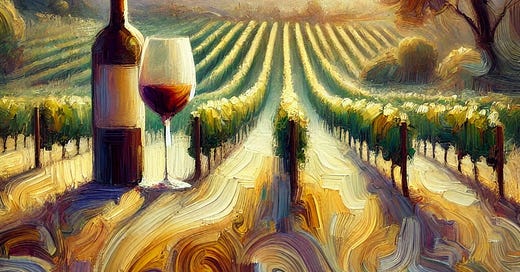



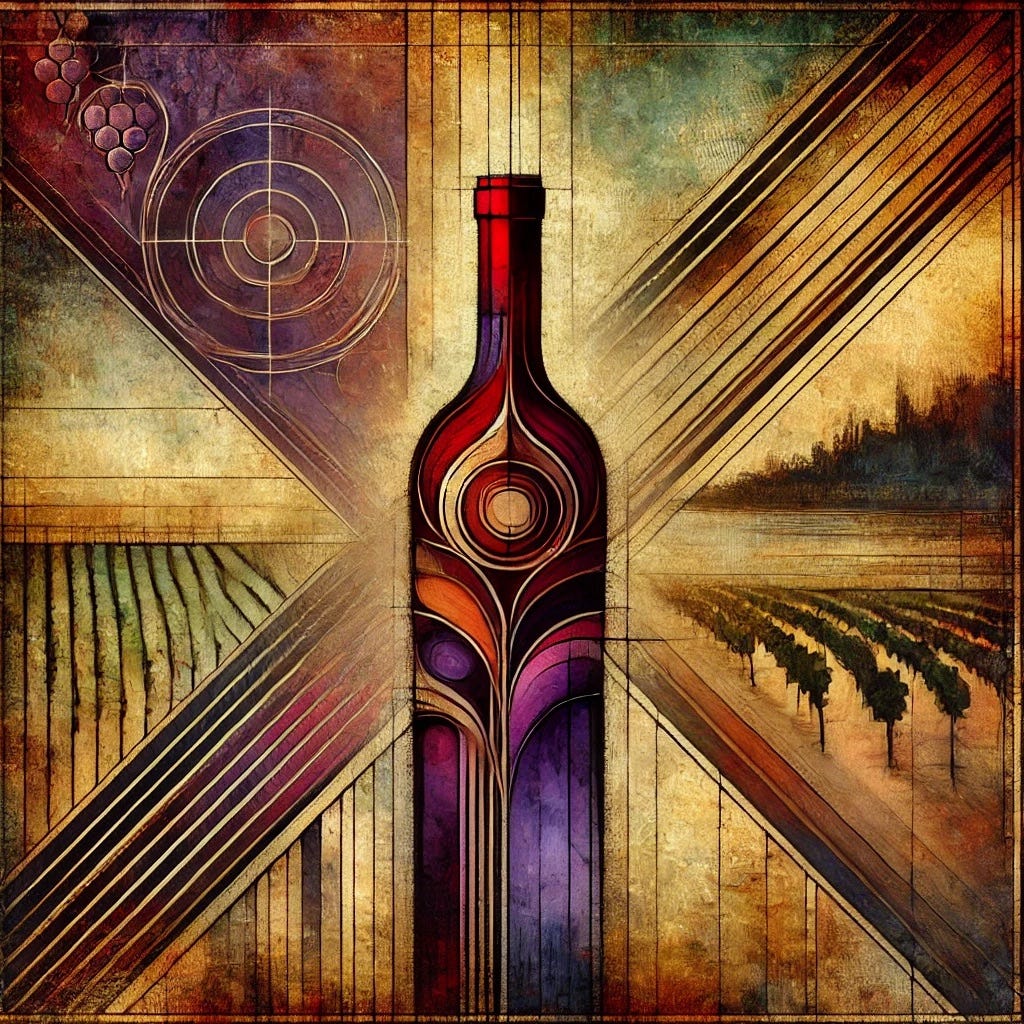

Dan
good stuff-- DO you remember any of the great BV Centennial year tastings I set up? (2000). Curious to know which of the wine you had in this more recent tasting still showed well...When we did the full retrospective of all vintages up to 1997 (still only 13.7%)back then, there were of course some duds (1954, 1963, 65 72, etc) but much of that, I attributed equally to vintage conditions and less than ideal cellaring conditions.
On another note--- You don't say anything about the first tasting you cited-the younger, high octane(?) 100 pointers. Curious as to what were tasted, your comments, and..alcohol levels of the better performing wines vs less so in the groupl How was Dick Peterson doing? Joel
I agree 100% on the appeal of older California Cabernet wines with reasonable alcohol levels, versus the fruit bombs with nose send of place. I blogged about it in February and March 2022, with the latter pursuing what Maynard Amerine called the Napa Nose. Here are excerpts and links.
"Having followed the evolution of the California wine industry since 1972, I’ve seen many changes in winemaking styles to appeal to new markets and critics whose rankings drive sales. In the past two decades, one trend is for the higher-priced, higher-scoring California cult wines to be very similar in style – big extract, thick, high-alcohol fruit bombs that lack any sense of place."
https://bit.ly/3yLoo2V
"In contrast, it is possible to find fine California wines with style and a sense of place in different parts of the Napa Valley. I cited the late Maynard Amerine, the legendary scholar from UC Davis, who noted some 40 years ago that the best Napa Valley wines showed a similar style in the nose and on the palate. Some of the characteristics of the “Napa nose” are the classic herbaceousness of Cabernet fruit, cassis, berries, mint, light oak and hints of spice. The wines with lower alcohol do evolve nicely and can be matched with a wide range of cuisine to complement but not overpower other flavors."
https://bit.ly/3klmr63